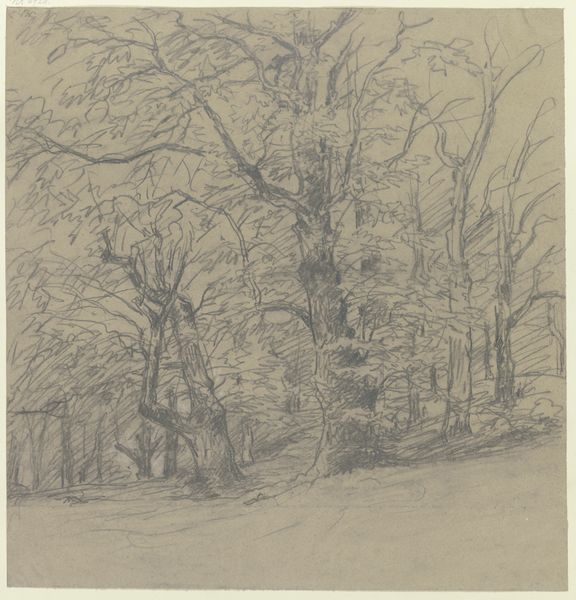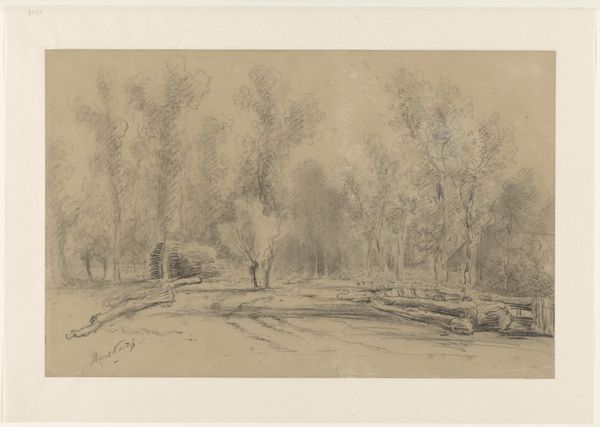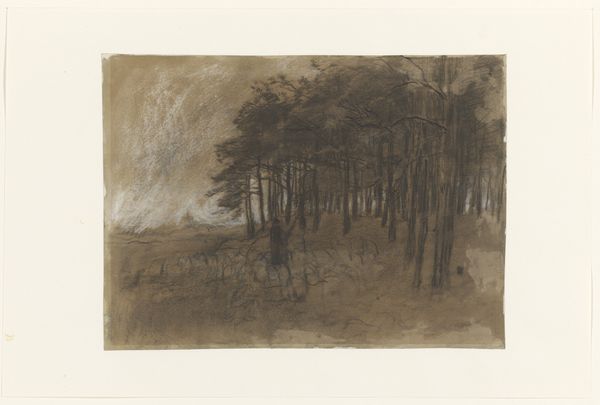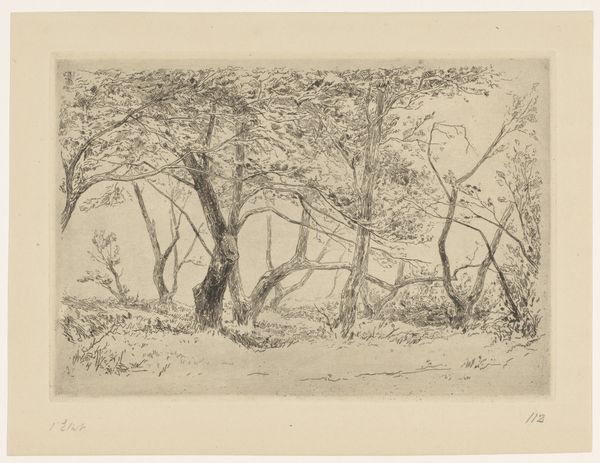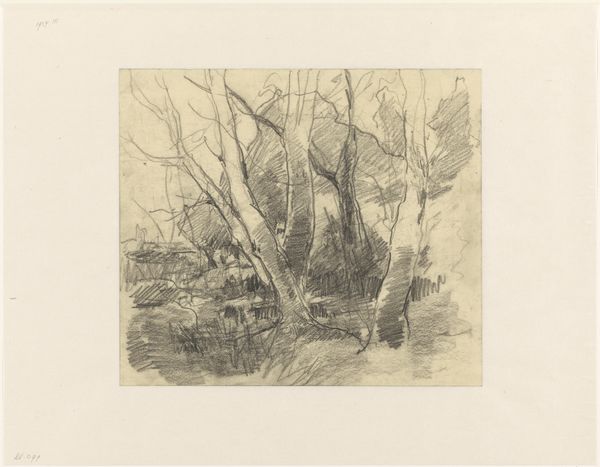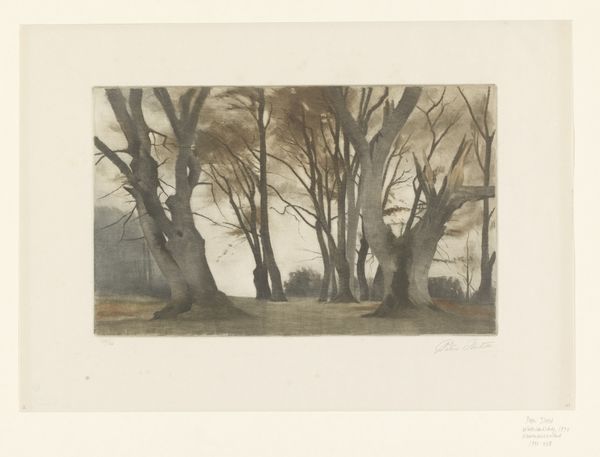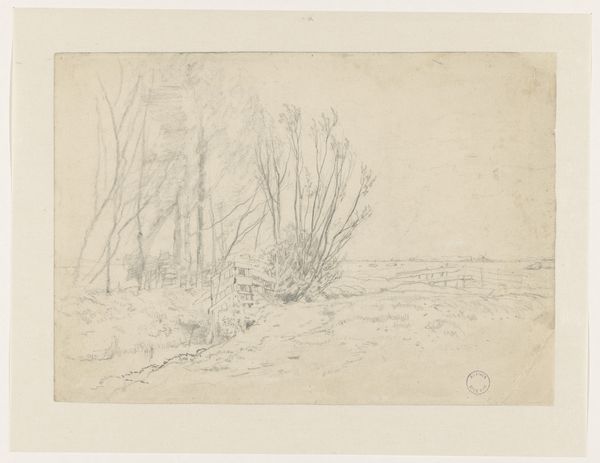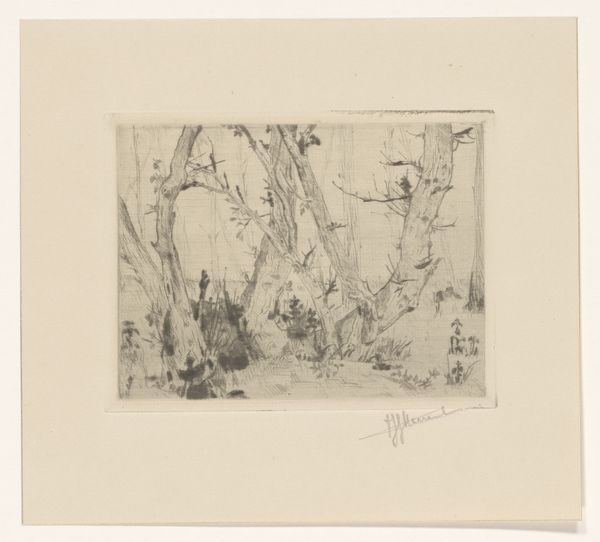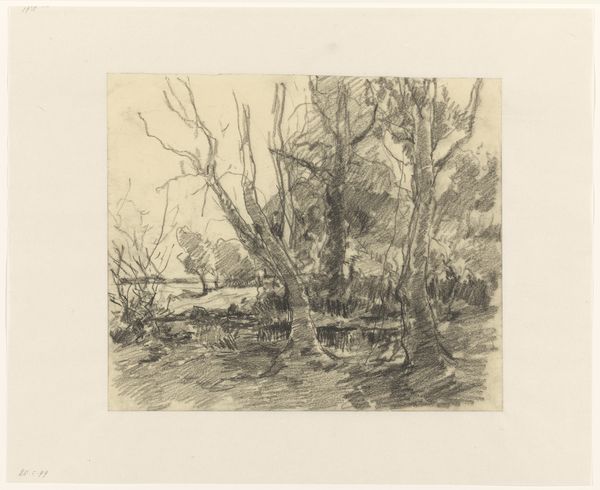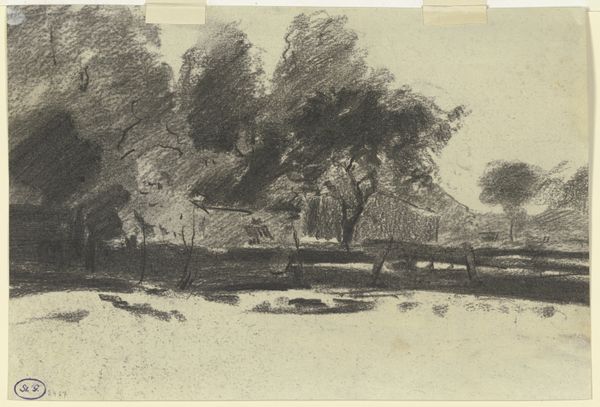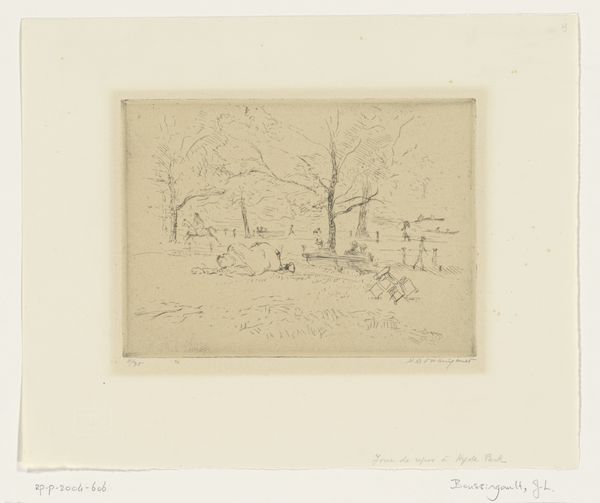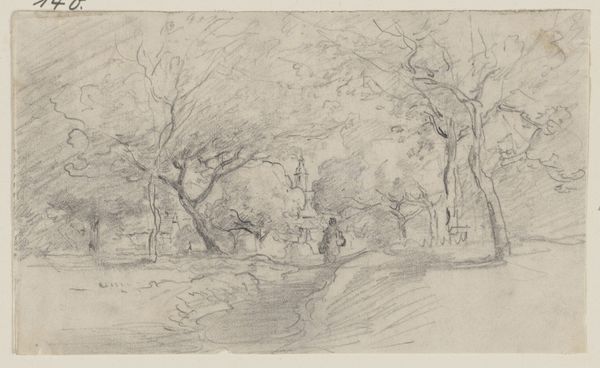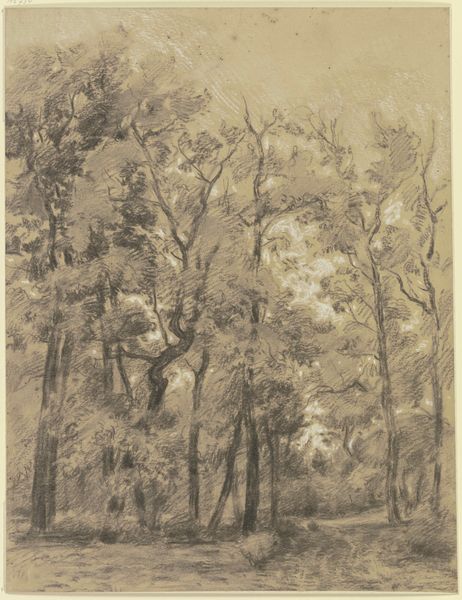
Spelende kinderen in de Zandplek, in de Scheveningse Bosjes 1870 - 1931
0:00
0:00
Dimensions: height 288 mm, width 385 mm
Copyright: Rijks Museum: Open Domain
Editor: So, here we have "Children Playing in the Sandpit, in the Scheveningse Bosjes," a pencil and watercolor drawing by Willem Bastiaan Tholen, made sometime between 1870 and 1931. It's charming, really capturing a sense of innocent play in a natural setting. How do you interpret this work? Curator: I see this drawing as an intersection of leisure, childhood, and the changing landscape of the Netherlands during that period. Tholen depicts children engaged in unstructured play. Consider what this says about evolving perceptions of childhood - the growing recognition of children's unique needs, like leisure time and the space to play. But also who has access to such space. Does this space feel accessible to all? Editor: I hadn’t thought about that aspect of accessibility. It does seem idealized and maybe only available to a certain class. Are you suggesting it speaks to social stratification? Curator: Precisely. The location, the Scheveningse Bosjes, hints at this. This wasn’t a public park in the modern sense, open to all, but a space where access reflected privilege. What do you notice about the depiction of the children themselves? Are they individuated, or do they blend into the scenery? Editor: They definitely blend in – more suggested than realistically rendered. It adds to the sense of a carefree, almost anonymous, experience. Curator: And in that anonymity, we can consider the absence of individual struggles, social unrest, even the growing pains of industrialization. It's a snapshot of leisure that might mask larger societal tensions, don't you think? It begs the question, whose leisure is visible, and whose is not? Editor: I see your point. By focusing on this idyllic scene, Tholen might inadvertently be obscuring a more complex social reality. I had only considered the image as simple nostalgia. Curator: And that is often how we’re invited to look, and it's vital to ask "who" benefits from that simplified viewing. It’s a reminder that even seemingly innocent scenes can be powerful sites for considering historical and social power dynamics.
Comments
No comments
Be the first to comment and join the conversation on the ultimate creative platform.
